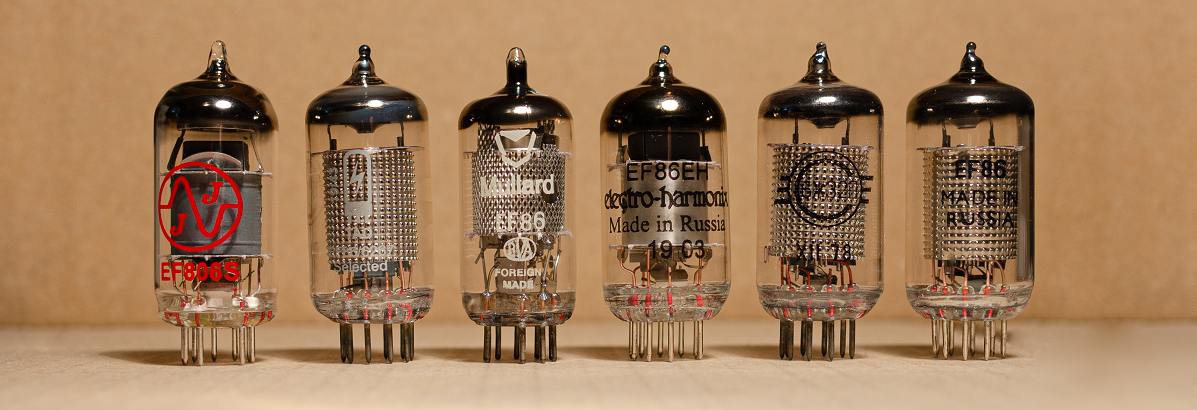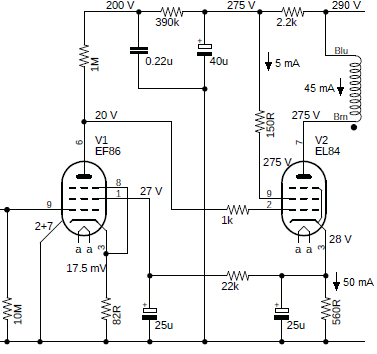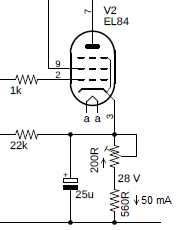
The EF86 valve is a low noise pentode designed by Mullard L.T.D. and introduced in 1953 as a successor of the octal EL37A. Its intended use is as an audio frequency voltage amplifier, particularly in the early stages of hight-gain audio amplifiers, microphone pre-amplifiers and magnetic tape recorders [http:///www.r-type.org/pdfs/ef86.pdf].
Due to the direct current coupling between the two stages of the Mullard 3-3 amplifier, the operating point of the EL84 tube and its cathode voltage is highly dependent of the amplification factor of the EF86 valve. Since this parameter varies from one valve to another and even between valves from the same manufacturer, the bias of the EL84 varies with it and, as a consequence, the plate current and the cathode voltage also varies. Let us not forget that the characteristics for a specific tube may differ appreciably from the published average values by the manufacturer.

If the direct current that passes through the output transformer increases, we will have an increase in distortion due to the saturation of the transformer core. If the operating point of the EL84 output pentode is different from the one established in the circuit design, we will also obtain an increase in distortion.
I have verified that with some new EF86 tubes made today that are not old NOS (New Old Stock) such as JJ Electronic or Electro Harmonix, and with some NOS like TAD Selected as well, the cathode voltage of the EL84 tube reaches 40 volts and the cathode current increases accordingly to Ohm’s Law to
I = U / R = 40 V / 560 Ohm = 0.071 A = 71 mA
To fix this issue we must increase the value of the EL84 cathode resistance so that the value of the plate current stays at 45 milliamperes. We must change the 560 Ohm 3 W EL84 cathode resistor to a 700 or 750 Ohm 3 W wirewound resistor or add a 150 Ohm 1/2 W resistor in series with the existing 560 Ohm resistor, or even better add a 200 Ohm adjustable resistor or trimmer potentiometer.

We must adjust the trimmer potentiometer until we measure 28 volts over the 560 Ohm resistor.
The power dissipated by the 200 Ohm resistor will be
P = I2 R = 0.052 · 200 = 0.5 W
Therefore we must use a 1/2 W resistor or, to be safe, a 1 w resistor.